Bushcraft Books: A Field Guide to Surviving the Wilderness
Original price was: $12.00.$6.00Current price is: $6.00.
From the Publisher

BUSHCRAFT
Bushcraft can mean a number of different things to different people. For some, it is simply developing enough skills to be able to enjoy the outdoors, camp under the stars, and appreciate what the nature around you can provide. Others like to see it as using that knowledge for survival.
This book blends both those interpretations into one. The better prepared you are for the outdoors and the more skills you know, the more enjoyment you will get—and yes, if push came to shove, you would be in a better position to survive if you got lost in a jungle. However, as with anything in life, they are skills that can be built up gradually. Getting out into nature is such a pleasure and so good for you that nothing should stand in the way of that happening.
Fiber Pros Cons Wool Absorbs lots of moisture Dries slowly, Itchy, Bulky Silk Absorbs lots of moisture, Feels wonderful, Lightweight Difficult to clean, Dries slowly, Expensive Polypropylene Wicks moisture effectively, Dries quickly Some retain odors, Some are difficult to clean, Some are scratchy Polyester Wicks moisture effectively, Dries quickly, Washes easily No significant problems
ALTERNATIVE COOKING METHODS: If you’re doing survival cooking and don’t have access to stoves, grills, and pots, there are various alternatives for how to cook food, depending on what you’re cooking.




SPIT:
Small mammals are often cooked on a spit, but even a squirrel takes a while to cook, and it’s no fun trying to hold one steady over a fire the whole time.
To support the spit, cut two stakes with Y-shaped tops and pound them into the ground on either side of the fire. If you find that the meat keeps flopping over into the same position when you turn the spit, cut a long, light stick and sharpen one end to stabilize the meat, as shown.
POT HANGER:
If you have some cooking gear, a pole stretched across a pair of Y-stakes can also be used as a pot hanger. If you make the stakes just a bit taller, it’s a nice way to keep a pot of water warm for tea while you laze around the fire after a meal.
FISH GRILL:
Many fish will simply fall apart as they cook. To prevent your hard-won meat from falling into the fire, make a fish grill out of young green branches. Make two rectangles or ovals, and weave a wide mesh of green branches with a simple over-under-over pattern. Tie the two pieces together over the fish and rest the grill on stones over a low fire or hot coals.
RACK:
Building a wooden rack over a fire isn’t as crazy as it seems at first glance. If you use green wood at least 2 in (5 cm) in diameter and place it just above the live flames, it will last for well over an hour— long enough to cook two or three meals. Or build it even higher and use it to smoke your meat to preserve it for long-term use.

PREPARING A FIRE
Nothing typifies sleeping out in the bush like a campfire.
Many people who do all their cooking over a stove still build a campfire at night. It’s the hearth we gather around when the day’s work and traveling are done. As we relax from the day’s rigors, we stare into the flames and then the dying embers, telling stories, listening to night sounds, or just thinking about our place in the universe.
Fire can be your most valuable survival tool, too. If you’re cold or wet and have no additional clothing resources, fire will make you warm and dry your clothes. It will cook your food, signal for help, and help you make other tools.
COLLECT MATERIALS Fires Must be Built Up in Stages
TINDER: The first tiny flame must take hold in fine, dry, often fluffy material called tinder. Tinder provides the heat to light slightly larger material called kindling.
KINDLING: Kindling consists of twigs, cones, and very small sticks. Once the kindling is alight, you can begin adding fuel wood.
FUEL WOOD: This can be anything from larger sticks to split logs (see pages 112–113), sawn branches and small logs. Fuel wood provides the heat to cook over, but burns slowly enough so that you don’t have to constantly tend the fire.
All materials must be dry. Except in a desert, any wood lying on the ground is almost sure to be too wet to burn.
EIGHT STEPS TO FIRE
- 1) Locate an appropriate location.
- 2) Prepare the site.
- 3) Gather materials for an enclosure, and assemble it.
- 4) Gather or prepare three types of fire materials (tinder, kindling, and fuel wood).
- 5) Lay the fire.
- 6) Kindle the flame.
- 7) Build the flame.
- 8) Maintain the fire.

READING THE WEATHER
Forecasting…Maybe Not
Many camping books spend pages explaining weather dynamics and how to read weather maps. Of course, if you had access to current weather maps, you’d also have access to current weather reports generated by professional meteorologists! As for observing the movements of animals, red skies at morning and other such folk wisdom —well, you never hear a meteorologist using that information to make or support a forecast.
The best resource for weather information is a weather-band radio that picks up nonstop local reports from the National Weather Service. Otherwise, stay alert to these easily observed natural signs:
COLD FRONT: If the wind suddenly rises or shifts and the temperature drops significantly along with it, a cold front is moving in. Aside from the fact that the cold might be of long duration, it can cause heavy rainfall.
LINE SQUALL: If you’re in flat, open country, and you see a low, dark wall of clouds moving toward you, you’re observing a heavy rainstorm accompanying the leading edge of a front. Take shelter fast.
CUMULONIMBUS CLOUDS: These are huge, dark, towering clouds with an “anvil-shaped” top. Expect a thunderstorm.
Publisher : Wellfleet Press; Reprint edition (July 20, 2021)
Language : English
Paperback : 256 pages
ISBN-10 : 1577152093
ISBN-13 : 978-1577152095
Item Weight : 1 pounds
Dimensions : 6 x 1 x 7.45 inches
Best Sellers Rank: #1,270 in Hiking & Camping Instructional Guides
-
-
-
Customer Reviews: 47 ratings
Additional information
| Publisher : | Wellfleet Press; Reprint edition (July 20, 2021) |
|---|---|
| Language : | English |
| Paperback : | 256 pages |
| ISBN-10 : | 1577152093 |
| ISBN-13 : | 978-1577152095 |
| Item Weight : | 1 pounds |
| Dimensions : | 6 x 1 x 7.45 inches |
| Best Sellers Rank: | #1,270 in Hiking & Camping Instructional Guides |
| Customer Reviews: | 47 ratings |



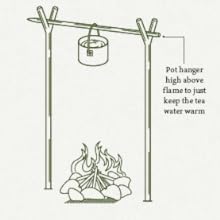

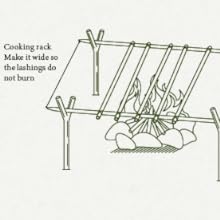
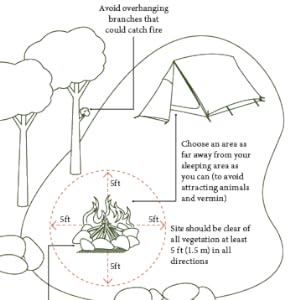
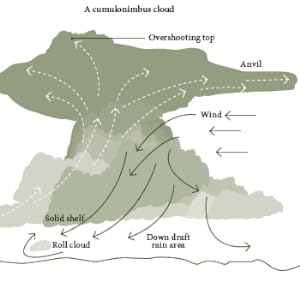
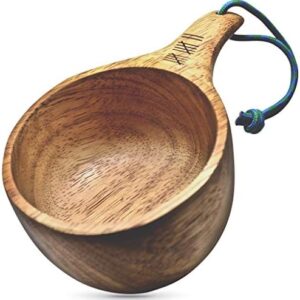
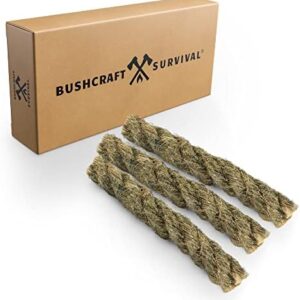
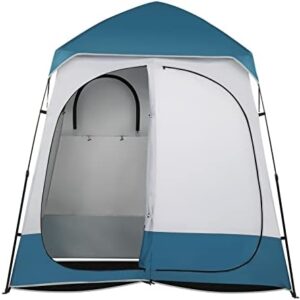
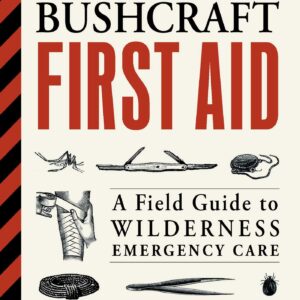
ROBERT LIEPE –
5.0 out of 5 stars
Very good quality of book for the price.
It is just what it was described as well very informative survival type book.
Jennifer Johnson –
3.0 out of 5 stars
good info; hideously illustrated
This book has some very solid info, and I like how it acknowledges and incorporates modern advancements into the bushcrafting vernacular. However, I was quite off-put by the the stunningly hideous illustration style consistent throughout the book, and annoyed at how blatantly the book’s style is a rip-off of Dave Canterbury’s Box set. Some of the drawings were so poorly executed that they were hardly even legible. I know, as an artist, that I’m more scrutinizing than the average reader, but sheeeeesh. The info is there, but the presentation is very, very, lazy.
Bradley Nelson –
5.0 out of 5 stars
Great into to bushcraft
This is a great intro to bushcraft. I recommend flipping through at home and finding a couple things you want to learn, read about it, and then go out and practice them (rather than hauling the book around with you). Some of the stuff in here I’ll never do, but many are practical. Highly recommend.
Precise Disarray –
5.0 out of 5 stars
well organized, easy to understand info, covers a lot, excellent starter or refresher book
This is what you will find in this small, but thick book (roughly 8″x6″1″):Chapter 1: TOOLS & GEARtent types, sleeping bags and pads, clothing, footwear, stoves, cookware, knives, axes & hatchets, saws, flashlights & lanterns, cordage & binding, preparing a survival kit, how to packChapter 2: WATERhow to find water, how to produce water, how to collect water, carrying water, making water safe to drinkChapter 3: FOODmeal planning, pre-trip preparations, keeping food safe, cooking food, hunting and gathering, how to hunt by hand, how to hunt with a spear, trapping, how to catch a fish, preparing caught foodChapter 4: FIREpreparing a fire, how to lay a fire, how to light a fire, how to keep a fire going, how to chop firewood, using a fire for warmth, using a fire for signalingChapter 5: SHELTEREthics of camping, where to camp, survival shelters, creating a latrine, creating a kitchen area, breaking campChapter 6; FINDING YOUR WAYplanning your trip, how to navigate, using a compass, maintaining a course in the field, what to do if you’re lost, dealing with different terrain, winter travelChapter 7: USEFUL SKILLShow to hold a knife safely, basic knife cutting techniques, how to fell a tree, how to sharpen a knife, how to use axes and hatchets safely, how to make useful tools, how to make camp more comfortable, using birch bark, how to make a rope, knots, reading the weatherChapter 8: TRAVELING BY BOAToptions for boatbuilding, boat propulsion, how to load a boatChapter 9: HAZARDSdealing with animals, recognizing poisonous plants, natural disastersChapter 10: FIRST AIDillness and injuries, first aid kitGlossary, Index, CreditsKnow what info you would like to have at your disposal. Not every book can have all the information you will ever need. Not even military manuals. I have a wide assortment of resources, and I try to practice when I can (though I have been lax). When it comes to this book, I say Go for it! I’m impressed. Solid info. Take a look at the chapter headings, and then take a look at the info I provided just below. Each phrase is a topic covered- usually a page or two each. Not super in depth, but the info is easy to read, easy to follow, and has simple illustrations.This type of information is right up my ally, I prefer to have knowledge and skills for self reliance rather than completely rely on someone else. I dont want to be clueless. That being said, I dont know everything, and I have forgotten a lot (use it or lose it). I have BOB, GHB, and other assortment of supplies and kits. I’m in my 40s and have been keen on learning this stuff since my teens (and have used many skills and supplies since for various scenarios). While I have read all the books, watched all the shows & videos, have been in situations that warrant the need for some of these skills, it is amazing how quickly, easily the skills are forgotten. So for that, I recommend adding books to your library, add them to your emergency supplies (dont rely on digital anything!), and take a glance at them ever so often.So what to choose? what is “best”? Well, in the world of gear, books, and other resources, the best ones are the ones that you know how to use and can really learn from. That is subjective– to keep on looking, reading until something just sticks. Everyone will have their own version of whats best, so if you are in learning phase (or are a seasoned pro and open to learning new, or different ways) then gobble up all that you can. I think this book has solid, easy to follow information. It leans more basic, but if you have the basics down you are already well ahead. This is a thoughtfully put together book. Non pretentious. I like the simple layout, the helpful illustrations, and the overall organization. Does it have everything? no, but it has plenty to offer. I would feel comfortable buying this for someone, and I am very pleased to add this to my home library. I think it is done well enough that even if you have no prior experience with these skills, the information is straight forward and easy to follow. If you are more ambitious, any of these chapters could make for a good fun weekend of honing some skills.Anyone would do with additional books on First Aid, and more locally relevant information such as maps and books on edible plants, medicinal plants, and plants to stay away from.I’m giving this 5 stars not because it has all the information anyone will ever need to survive in the wilderness, but because it is user friendly, well organized, easy to understand, has a thoughtful, functional, practical approach to a lot of topics that will indeed come up not just on a camping trip but also if you find yourself in a scenario that unfortunately warrants it. Pages are cardstock, so this should hold up to a lot of handling.
Experienced Reviewer –
4.0 out of 5 stars
Review: Bushcraft A Field Guide to Surviving the Wilderness
I have always enjoyed hiking, backpacking, and camping. I have been lucky enough to experience nature in our family’s many visits to various national and state parks as well as nature areas closer to home.What I probably enjoy the most is to follow the longer trails, or going off trail, in the backcountry, and would chose to camp away from the crowds. Solitude and existing with nature is a part of the experience for me. That said it is best to know about the environment and how to deal with unforeseen circumstances you might encounter, and know how to use what’s around you to improve your situation.This book is an excellent resource to read before your first foray into the wilderness as it explains and illustrates (through very clear test and drawings) basic skills and how to survive there if necessary. It’s a great resource guide and small enough to fit in your backpack. I think of it like the car manual I keep in my glove box.It covers how to prep, what to carry, how to find your way when you’re lost, first aid, how to make fires, read weather signals, where and how to make simple shelters – how to make basic tools and much more. It is both a very good guide to learning basic camping skills as well as a survival guide – it is packed with clear, concise, well-organized and useful information.I have read many books on this subject I think this is definitely one of the best, whether you’re just starting out or as a reference guide if you’re more experienced.I enjoyed the book immensely and plan to refer to it often.Thanks for reading my review
One person found this helpful
An Earthling –
4.0 out of 5 stars
A very good book to keep in your survival pack
Yeah, I was a Scout (it was mixed gender girl & boy Scouts.) And I grew up learning a lot of nifty-woodsy knowledge. I certainly know more than the average person. But that being said, I have gotten soft and turned into a real sissy in my old age, along with 10 years of city life.I can tell you that if I was dropped off in the middle of nowhere, with just this book, that I would be grateful for it even if it does just skim the basics, because in that type of situation, you can likely forget all common sense and everything you learned. That is one reason they put common sense instructions in first aid kits- people panic or cannot think clearly under stress.Myself, and my 19 year old son enjoy studying survival books/info/groups as a hobby and this book is really great for him because he goes camping and hiking a lot. It is a little larger than a handbook, but still a great size for carying in your “GHB/BOB.The pages are easy to turn, hold open. They are thick with a bit more durability than a regular book.Everything in this book is really easy to understand. I would consider this book, or one like it to be an essential, but also be sure to include a wild edible food book that is relevant to your region. As well as a first aid book.
Joshua Senecal –
4.0 out of 5 stars
Great, easy-to-read comprehensive overview. Make sure to practice!
This provides a good comprehensive overview of the many aspects of bushcraft. Some of it is very practical and applicable to all forms of camping and backpacking. Some of it, like how to build a coracle or skin a rabbit, is likely only applicable only if you run into serious problems. It is all very informative and useful information. The only major shortcoming of this book is the same that all other books of this type have: of necessity most sections give an excellent overview, but you can’t always dive too deep into the subject. In fact, most sections of this book could probably warrant a book of their own.This isn’t a book you’ll want to take backpacking–it’s not a large book, but it’s still larger and heavier than what you’ll want to pack. So the best use of this book is to periodically re-read sections of it to keep them in mind. As with any skill, while it’s nice to read about it over and over to really understand and become skilled you need to practice. So if you’re serious about bushcraft you should take the time to practice some of the things in the book so you can draw on those skills and not have to learn them when you need them.
One Reviewer –
5.0 out of 5 stars
Not as Comprehensive as a Military Guide, But More Practical For Laymen Quick Reference
This bushcraft reference book isn’t as comprehensive as a military reference guide, but it certainly is packed with lots of practical bushcraft helps and references as well as basics that would help in many survival situations. I’ve liked these sorts of books since being in the scouts and hanging out with one of my cousins who first taught me how to make a proper lean-too when we were kids.I like the way each topic is logically laid out into sections that make sense, as well as the helpful illustrations that accompany the directions or topics. There are just a few photos sprinkled throughout, but the illustrations work for me just fine and are good visuals.I haven’t read or referenced one of these sorts of books in years, and forgot how much I love reading them, but the material is timeless and the author does a good job of covering bushcraft basics and more in a small-ish size. I enjoy watching all sorts of bushcraft and wilderness skills videos, and I imagine anyone with similar interests would easily enjoy this book for the useful information throughout.I also think that this book would make a great gift for anyone that enjoys learning how things are done without the benefits of electricity or electronics out in the woods. For teen girls and boys to older men and women, if this sort of topic appeals to them, this book likely would as well.As an older woman that spent half my tomboy childhood in the woods exploring and making forts, this captivated my interest and taught me some things I didn’t know, such as how to prepare and eat bugs (something I hope I don’t ever have to resort to) as well as helped me to brush up on some things I thought I knew, but realized I forgot some finer details. Thanks for reading.
Gavin and Alice –
4.0 out of 5 stars
Good beginner guide to survival in the wilds.
This is a good book for beginners that teaches you strategies for acquiring woof/water/shelter etc. in the event that you’re lost outdoors somewhere, and also ways to get yourself un-lost from there. Woudl make a good gift for a scout or anyone with an outdoorsy personality.
Matt Morgan –
5.0 out of 5 stars
Full of Fascinating (and Useful) Information
A bit of field know-how is always a good thing to have when you spend time either hiking or camping, and this book aims to collect together several bits of useful knowledge into one accessible volume that can be easily packed and carried with you. It is a fascinating book and has a lot of really interesting (and usable) information it in.Common skills that are very useful when you’re trying to survive in the wilderness include foraging for edible plants, hunting and trapping, fishing, avoiding and dealing with poisonous plants, tying knots, finding shelter and more. All of these and more are in this little book, complete with diagrams and drawings. The material is not exhaustive; you won’t find a complete field guide to all edible plants or be able to use this to tie any and all knots, but the most common scenarios are covered in enough detail to be useful.I found some of the material particularly interesting, especially the methods of collecting water when there is not normal water sources available like a pond or stream.Orienteering (navigation with topographical maps and a compass) also has good coverage though hand-held GPS receivers also get mentioned too. This is a particularly useful skill when in an isolated location far from other people or where help is likely scarce. Most people will use a GPS or their phone to navigate these days, but when the batteries are dead being able to navigate the old fashioned way is an important skill; this book shows you how.I would not call this book an absolutely complete reference but it does cover a very large swath of information that most people are likely to encounter. It’s well written, easy to understand and full of information you never realized you wanted to know.
WISHFUL THINKING –
5.0 out of 5 stars
Super Field Guide
I do love to camp and this book Bush Craft is just perfect. This is a really complete survival guide. Just and education on what I need and great suggestions on all the necessities that I have not thought that I needed. I especially appreciate the first aid section. Great book and highly recommend for all campers. Also this book is compact enough to fit in my backpack.
K Hern –
5.0 out of 5 stars
Cant wait fort he apocalypse!
Haha, I got this book as a joke for my daughter because we are always talking about what we will do when the zombie apocalypse hits. We’d run to the woods and live off the land, or so we think…. now we can actually plan it! But all joking aside, this book is very thorough and it could certainly be the difference between life and death in that situation!
Mary V –
5.0 out of 5 stars
Essential for the outdoors person
This book is a thorough and comprehensive guide to “roughing it”. It covers the basics: tools, water, food, fire, and shelter. The book explores useful skills, as well as a section on things that could go wrong. A chapter on first aid is also included.If you are planning a camping or hiking trip, I highly recommend this book.
M.H. –
5.0 out of 5 stars
Nice book
Exactly as described
E.Swope –
3.0 out of 5 stars
Very much a beginner’s book
Bushcraft: A Field Guide to Surviving the Wilderness (Complete Illustrated Encyclopedia, 6) feels very much like a boy scout’s guide. It is not up to the level of the Old Farmer’s Almanac. It is not so much a survivalist guide and a guide to yur first suburban camping expedition. More attention is devoted to the different types of tents available for purchase than how to find water or food if you are truly lost/ stranded. I am by no means a survivalist, nor a novice camper but I thought I might be able to pick up some tips. Really there was not much novel or useful information for me. Their section on packing food, for example, has a separate list for if you will be driving out to pick up food while you are camping.Maybe this was just intended for different readers than myself. Cub scouts perhaps?
Antigone WalshAntigone Walsh –
4.0 out of 5 stars
Bush Basics
This book covers the basics, getting food, shelter, water, weather, first aid. It is handbook style. The instructions are spare with ink illustrations. It is best suited for someone with some outdoor experience or someone who is willing to practice.Style is matter of fact.
Patrick –
5.0 out of 5 stars
Good book before or while in the wilderness.
– I’ve found this book leans towards offering advice before going into a survival or wilderness situation. It can be put with a kit, but it focuses on preparation. This is great, but it also has sections that can be referenced while in the field.- Good first aid advice, but it doesn’t go into detail. It just gives critical info without much fluf. Might be okay when needing quick info, but if the book is used before an outing, it will just lead to more questions. Still this chapter is a good compliment any first aid kit.- Book is small enough that it can fit into a backpack or car for reference. Book is 7-1/2” x 6” x 3/4” and weighs 1 pound.- Due to it’s size, this book is good as an introduction to wilderness/hiking/survival/hunting. It covers a lot of information and would be great for anyone getting interested in the outdoors, or survival situations in general. It can be read to help answer basic questions before moving onto more advanced books.- Chapters are broken down into general sections for Tool & Gear, Water, Food, Fire, Shelter, Way Finding, Useful Skills, Boat Travel, Hazards, and First Aid. There is also an index to quickly find information. I do like how really deep info is condensed and consolidated so just the most important and critical stuff is presented. I think this helps a person get the idea and can dive in deeper with other books or videos to get more skills and info.Good introduction book that anyone can benefit from. Above review is for the Bushcraft: A Field Guide to Surviving the Wilderness
Kelly Sottelbaum –
4.0 out of 5 stars
Good book but very topical
While this book does have some great pages describing situations or how-to’s, other sections are entirely lacking in detail. For example, I certainly would not feel comfortable preparing a rabbit that I just killed after reading the 2 pages (with illustrations) about it. Yeah, there are some basics there but it’s mostly “here’s some things to do, and some things not to do” without depth.Overall, I did enjoy the book as many of the topics are good common sense (or common-sense after experience) advice and know-how. That said, certainly don’t parachute out of a plane over the Rockies with just this book and your wits, ’cause it won’t end well for you.
Anonymous –
4.0 out of 5 stars
Attractively designed
This is a nifty, attractive coffee-table book for any aficionado of both wilderness survival and good design. Well bound on heavy paper, it has visual-encyclopedia-like spreads on all kinds of survival topics. I’m sure it’ll be perused from a couch more than it’s packed along on an expedition — indeed, it’s too heavy and pretty to be packed on a real trip to the back of beyond — but it’s a great thing to leaf through, whether you learn enough from it to stay alive or not. Great gift, too.
Rebecca Haden –
5.0 out of 5 stars
For everyone
Do you think you might want to dig a latrine correctly on your camping trip? Build a hut? Use a fire to signal to someone? Make an adze? This book has all that info.On the other hand, there is also a section on the ethics of camping, how to use a camping stove, and other basic skills. My son takes part in bushcraft competitions, so I figure he will enjoy this book as a guide to honing those skills. At the same time, I have years off camping experience but have always relied on my husband to. build fires. I think I will find a lot of the information that he skips over useful.I enjoyed reading through the book.It’s very clear, with great illustrations. It’ll be a pleasure to read in the winter when we just dream about getting out into the wilderness, ut then it’ll go into the camping supplies box for reference when it’s needed.
Sibelius –
4.0 out of 5 stars
Beginner-medium field guide
Not quite a beginner’s field guide – this one sits mostly in the middle with text heavy layouts broken up with hand drawn illustrations and the occasional b&w photograph. The book does cover most of the essential topics necessary for camping and rudimentary outdoor survival – navigation, fire, water, etc. Dimensions of the book at 7.5″ x 6″ makes it easy enough to tuck into your pack and the matte paper is thick and sturdy and will hold up (mostly) under the rigors of dry, outdoor conditions.
JessicaJessica –
5.0 out of 5 stars
Good read
Great skills to learn, and we’ll explained. Never know when a minimal skill could be an important one.
🌟 Emma Elizabeth 🌟 –
4.0 out of 5 stars
Handy guide
This book has a lot of useful and cool information, but is definitely geared towards beginners, probably more of a teen audience? I do a lot of hiking and “car” camping, and there wasn’t much in here that was new info to me.
Susie Q. –
5.0 out of 5 stars
Great go-to guide for hunting/camping
This book is extremely informative yet enjoyable to read. It is as exhaustive a read as any I’ve read on the topic of camping out, and deals with virtually every possible consideration related to camping from how to use maps, how to pick a tent, how to catch animals for food with a spear or a trap, and how to prepare food for meals, among many others topics. The information is complemented with quality pictures, graphs, and charts. I would recommend this book to anyone who has an interest in camping or hunting.
Thraddash –
5.0 out of 5 stars
Amazing guide to roughing it!
Books like this are an absolute necessity if you plan on any level of roughing it. They did such an amazing job covering the details without feeling like it was being skimmed over. I cannot wait to give this to my son to help him be resourceful and hopefully off the grid.5-star material. I could not recommend it more.
101 –
5.0 out of 5 stars
Very well Organized Book
This book provides a lot of great information. There is information and detailed pictures on various outdoor topics. The book does not take up a lot of space and is easy to carry in a backpack. Overall I would highly recommend this book to anyone interested in a field guide for surviving the wilderness.